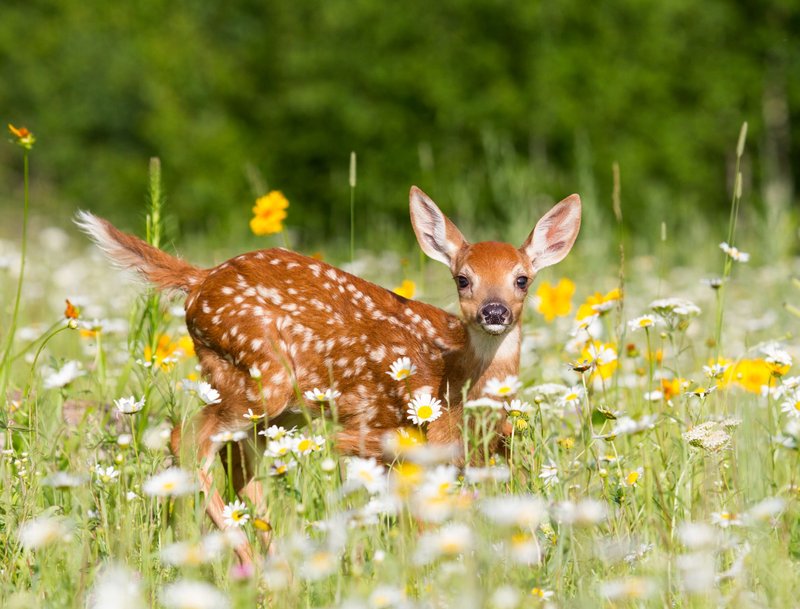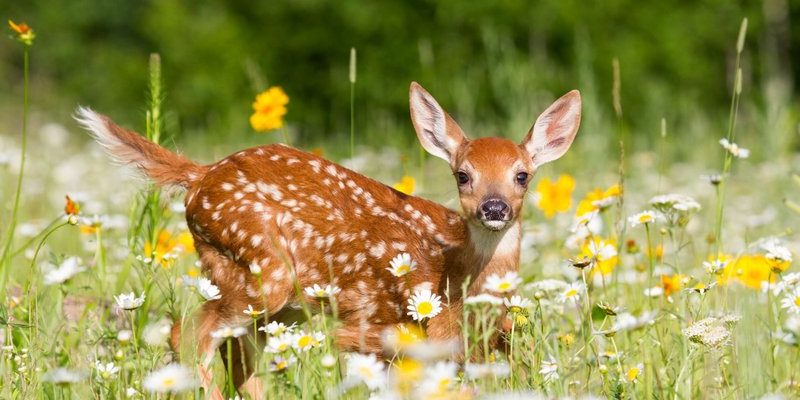
Imagine sitting in a coffee shop, chatting about how different animals experience the world. It’s fascinating, right? White-tailed deer, for example, exhibit behaviors that show their cognitive abilities in surprising ways. From problem-solving skills to social interactions, understanding their smarts can offer us insight into their survival strategies. Let’s dive into the world of these remarkable creatures and discover what makes their minds tick.
Cognitive Abilities of White-Tailed Deer
White-tailed deer are surprisingly intelligent animals. Their brains, while small compared to ours, are finely tuned for survival. They rely on a mix of instinct and learning to navigate their environments. Here are some key aspects of their cognitive abilities:
- Memory: Deer possess excellent long-term memory. They can remember locations of food sources and potential dangers, allowing them to avoid predators.
- Problem Solving: When faced with obstacles, white-tailed deer show the ability to figure out how to navigate around them. For example, if a fence blocks their path, they might look for a nearby opening instead of just standing there.
- Learning from Experience: Deer are capable of learning from their past encounters with humans and predators. If they have a negative experience in a particular area, they’re likely to stay away from it in the future.
Cognitive skills are crucial for their survival. They need to remember safe routes and food sources to thrive in the wild. This is why understanding their intelligence helps us appreciate their behavior more deeply.
Social Behavior in White-Tailed Deer
You might be surprised to learn that white-tailed deer are quite social animals. They often travel in groups, especially females and their young. This social structure plays a key role in their survival. Let’s unpack this a bit further.
- Social Learning: Deer can learn from each other. If one deer identifies a new food source, others in the group might follow. This shared knowledge helps the group thrive.
- Communication: White-tailed deer communicate through various sounds, body language, and even scent marking. For example, a raised tail signals alarm, while softer sounds can indicate contentment or curiosity.
- Hierarchy: There’s often a social hierarchy within groups of deer. Dominant individuals may gain access to better resources, while subordinate deer learn to navigate these social dynamics.
Understanding their social behavior gives us insight into how they interact with their environment and each other. Just like us, these deer have a social life, and that impacts their behavior significantly.
Survival Strategies
When it comes to survival, white-tailed deer have developed impressive strategies. Their cognitive skills play a big role in how they respond to threats and find food. Here are some fascinating strategies:
- Camouflage: Their natural coloration helps them blend into their environment, making it harder for predators to spot them. This isn’t just instinctive; they can often find the best hiding spots based on previous experiences.
- Flight Response: When sensing danger, deer rely on flight rather than fight. They can run at high speeds and change direction quickly to evade predators.
- Feeding Patterns: Deer often feed at dawn and dusk. This not only helps them avoid predators but also allows them to take advantage of cooler temperatures.
These strategies show a blend of instinct and learned behavior. It’s kind of like they have their own little playbook for facing the challenges of life in the wild.
Comparison to Other Animals
You might be wondering how white-tailed deer stack up against other animals in terms of intelligence. Let’s take a moment to compare them to some familiar wildlife.
- Rabbits: While rabbits are quick and can learn from their environment, deer have a more developed memory and problem-solving skills.
- Foxes: Foxes are known for their cunning behavior, often outsmarting their prey. However, deer demonstrate adaptability and memory that is crucial for survival.
- Dogs: Dogs are incredibly social and trainable. While deer may not reach that level of relationship with humans, their social structures and communication are fairly complex in the animal kingdom.
In comparison, white-tailed deer may not perform tricks or show off their smarts like dogs, but they have their own unique set of skills that allow them to thrive in the wild.
Challenges to Their Intelligence
Despite their impressive cognitive abilities, white-tailed deer face challenges that can impact their behavior. Let’s explore some of these issues.
- Human Encroachment: As urban areas expand, deer face new challenges. They must learn to navigate roads and develop strategies to avoid cars, which can be dangerous.
- Predation: While deer are adept at avoiding predators, the introduction of new threats, such as wolves or humans, may force them to adapt continuously.
- Food Scarcity: Changes in food sources due to climate change or habitat loss can challenge their survival strategies, leading to stress and altered behaviors.
These challenges can strain their cognitive abilities, forcing them to adapt quickly. They are resilient creatures, but understanding these pressures helps us appreciate their intelligence even further.
So, how smart is a white-tailed deer? Honestly, they’re quite clever in their own right. From their impressive memory skills to their social structures and survival strategies, these animals are more than just graceful figures in the woods.
By learning about their cognitive abilities and behaviors, we gain a deeper appreciation for what it takes to thrive in the wild. White-tailed deer remind us that intelligence comes in many forms, and they’ve developed their own unique skills that help them navigate their world. The next time you spot one in the wild, you’ll know there’s a lot more happening behind those gentle eyes.

